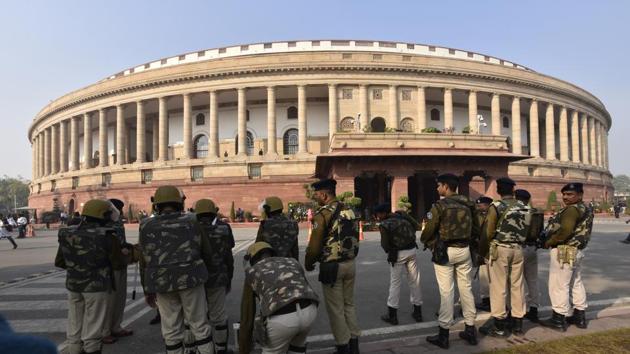20 years after IC-814 hijacking, India is better placed to handle threats
India’s security management at airports has improved manifolds in the last 20 years, if not impregnable, with a combination of manual frisking and checking and use of technology and enhanced intelligence pertaining to threats to the aviation sector.
Twenty years after the hijacking of the Indian Airlines’ Flight 814 plane by terrorists of the Pakistan-based Harkat-ul-Mujahideen to secure the release of theirs leaders including Maulana Masood Azhar, a lot has changed.

From security protocols at the airports to the use of advanced technology to better coordination and information sharing with airport authorities of neighbouring countries like Nepal, Bangladesh, Sri Lanka etc.
But everything depends on how India’s leadership responds in case of something like that was to happen again.
India’s security management at airports has improved manifolds in the last 20 years, if not impregnable, with a combination of manual frisking and checking and use of technology and enhanced intelligence pertaining to threats to the aviation sector.
Several agencies including the Bureau of Civil Aviation Security (BCAS), Intelligence Bureau, Central Industrial Security Force (CISF), state police forces and others now work together to make sure no untoward incident takes place at airports.
In fact, there have been no major terrorism related incidents at any of the airports in India since IC-814 was hijacked on December 24, 1999, and the country’s security management at airports is considered one of the finest.
The security measures include strict access control to regulate entry to terminal building, air side, all operational area and other aviation facilities, intensive checking of vehicles entering car parking area to preclude possibility of car bomb attacks, enhanced screening of passengers, staff and visitors including enhanced random screening at the main gate, enhanced screening and protection of hold baggage, cargo, cargo terminal, catering, emails, etc.
There is also surveillance through closed-circuit television or CCTV cameras as well as manual surveillance in and around the terminal buildings and operational areas, quick reaction teams for any operation. Subsequently, air marshals now travel in all Indian aircraft to prevent any repeat incident.
Several new protocols have been added particularly after the parliament passed Anti-Hijacking (Amendment) Bill in 2014 to deal with the hijacking of an airplane.
There are regular high alerts issued at airports whenever any terror group issues a threat or intelligence agencies receive information on a hijacking plan.
Still, there are many loopholes which, if not taken care of soon, could be exploited by terrorists, who adapt very quickly as pointed out by intelligence agencies.
For example, plans to install full body scanners at Indian airports have not fructified even after a decade except trials are going on at couple or major airports. Similarly, the perimeter security of several airports remains a concern.
When IC-814 was hijacked, several questions were raised on why didn’t the government allow the Indian Air Force (IAF) to trail the plane even though it was in the Indian airspace for almost three hours; why was there no intervention from the Indian Army and National Security Guard (NSG) when the plane stopped at the Amritsar airport and why wasn’t enough international pressure put on Pakistan to hand over the hijackers after the incident.
But the most important question is how the government is going to react if there is another hijacking of an Indian plane.
Get Current Updates on India News, Election 2024, Arvind Kejriwal Arrest Live Updates, Bihar Board 12th Result Live along with Latest News and Top Headlines from India and around the world.



